
15 minute read
TINTORETTO’S DISTRICT
ITINERARIES
PCATARINA BELOVA/SHUTTERSTOCK.COM ©
Advertisement
BASILICA DI SAN MARCO
This is the most important catholic church in the city. The original church dates back to before the year 1000, while its famous polychrome façade, embellished with mosaics and bas-reliefs, is a 13th century addition. Inside, a triumphant array of domes and transepts, mosaics and gold, marble and numerous other treasures.
ITINERARIES
SHUTTERSTOCK.COM ©

PALAZZO DUCALE
A masterpiece of Gothic art and a repository of innumerable art treasures, it features a number of different and intricate architectural and ornamental details, dating from the 9th century. Formerly the residence and government centre of the Doges, it is superbly decorated by artists like Titian, Tiepolo and Tintoretto.
ITINERARIES
CANADASTOCK/SHUTTERSTOCK.COM ©

CANAL GRANDE
Although it is known as ‘the most beautiful street in the world’, the Grand Canal is the main waterway of Venice. Lined on both sides by an uninterrupted series of palaces, churches, hotels and other public buildings, it offers a journey back into history, evoking the pomp and splendor of the ancient Serenissima.
ITINERARIES
SERENAROSSI/SHUTTERSTOCK.COM ©

PONTE DEI SOSPIRI
A Baroque bridge that, by crossing the Rio di Palazzo, once connected the Palazzo Ducale to the prisons, and today it is one of Venice’s most romantic sights. The ‘sighs’ from which its name derives are not those of lovers, but those of condemned prisoners, emitted as they were led down to the cells. It can be accessed on a visit to the Palazzo Ducale.
ITINERARIES
© MICHELE CROSERA
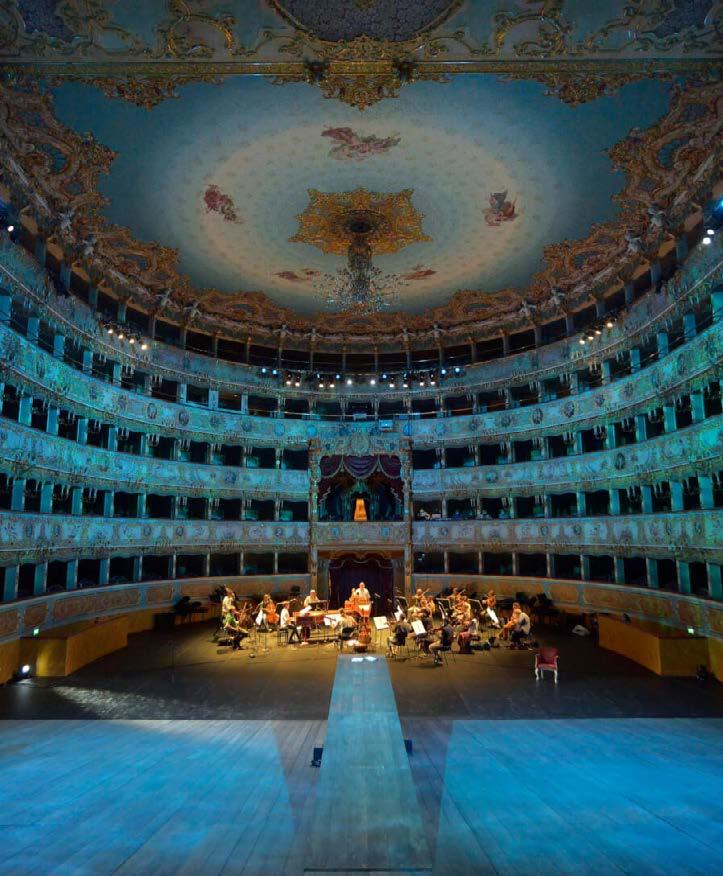
TEATRO LA FENICE
Twice destroyed by fire and twice restored to its former splendour (the last time was between 1996 and 2003), for centuries it has been Venice’s principal stage for world-class opera, music, theater, and ballet. However, its high point came in the 19th century when it hosted the ‘premieres’ of operas by Rossini, Bellini, Donizetti and Verdi.
ITINERARIES
© SHUTTERSTOCK.COM

PONTE DI RIALTO
This is the oldest and most beautiful of the four bridges crossing the Grand Canal. Originally built during medieval times as a pontoon bridge at the canal’s narrowest point to facilitate access to the popular Rialto Market, it is still a hub of commerce and is lined on both sides by shops. It includes as many as 120 steps.
ITINERARIES
OLGA GAVRILOVA/SHUTTERSTOCK.COM ©

SCALA CONTARINI DEL BOVOLO
A rare gem of Venetian architecture, just steps from Campo San Manin: a combination of Renaissance, Gothic and Byzantine elements. The external ‘bovolo’ (snail-shell) stairwell of Palazzo Contarini is enclosed in a cylinder perforated like lace. The architectural beauty of the stairwell, combined with the view that can be enjoyed on reaching the top, is well worth a visit.
ITINERARIES

GALLERIE DELL’ACCADEMIA
The museum hosts the most important collection of Venetian and Veneto artworks dated between the 14th and 18th centuries. Here you can admire masterpieces by Giovanni Bellini, Giorgione, Carpaccio, Titian, Tintoretto, Veronese and Tiepolo and works by several important landscape artists including Canaletto, Bellotto and Guardi.
ITINERARIES

CHIESA AND SCUOLA GRANDE DI SAN ROCCO
A Renaissance complex consisting of a church and adjoining palace, it was built as a sign of devotion to San Rocco who was called upon to protect the plague-stricken population of Venice during the 15th century. The interiors are filled with numerous treasures.
ITINERARIES
© PANI GARMYDER /SHUTTERSTOCK.COM
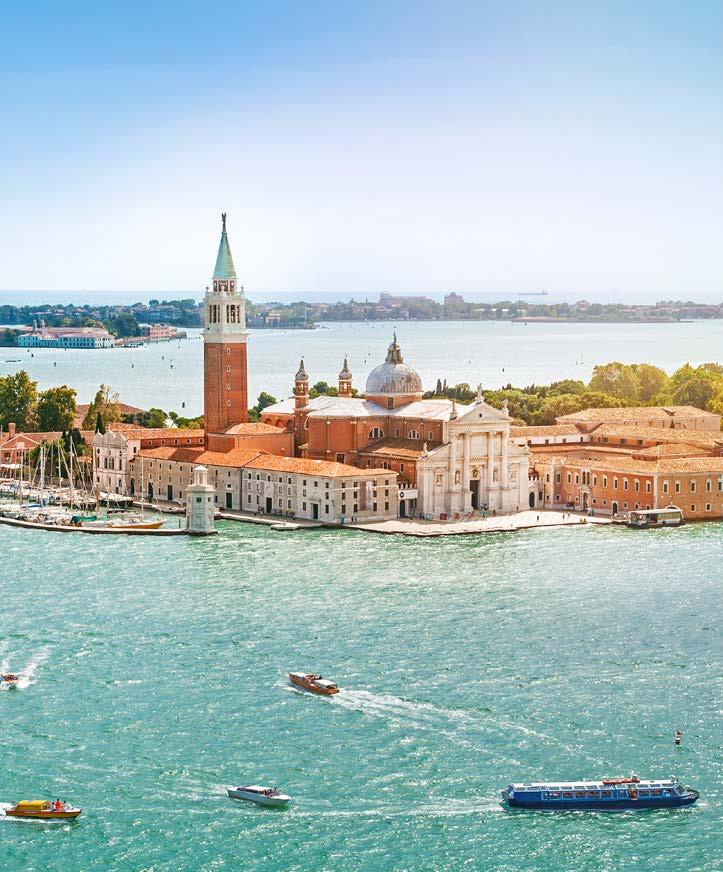
SAN GIORGIO MAGGIORE
This small island is part of the panorama that can be enjoyed from St. Mark’s square and is part of the San Marco sestiere. The church of San Giorgio Maggiore is one of the masterpieces of Andrea Palladio. The monumental complex of the former Benedectine monastery (founded in the 10th century) is now home to the Cini Foundation arts centre hosting ‘Le Stanze del Vetro’ cultural project.
ITINERARIES
4KCLIPS/SHUTTERSTOCK.COM ©

LIDO DI VENEZIA
The narrow strip of land that extends for a dozen kilometres in front of Venice, dividing the Lagoon from the Adriatic sea, is an island, a town with its own history and a natural reserve, but also a jet-setters’ paradise, with luxury hotels, the Palazzo del Cinema and exclusive Art Nouveau villas. The Lido offers beach lovers 15 km of fine sandy beaches, from the lighthouse of Punta Sabbioni to the picturesque town of Cavallino.
ITINERARIES
LOIS GOBE/SHUTTERSTOCK.COM ©

JEWISH GHETTO
The Ghetto of Venice, the first ever, was established in 1516. It is located in a secluded sestiere of Cannaregio. A walk through ‘calli’, ‘campi’ and ‘campielli’’ allows visitors to soak up a magical, cocoon-like atmosphere that brings to mind Shakespeare’s play the ‘Merchant of Venice’. Here you can admire ancient synagogues, the ‘tower houses’, the ‘schole’ and the workshops.
ITINERARIES
GIVAGA/SHUTTERSTOCK.COM ©

PUNTA DELLA DOGANA
The eastern tip of Dorsoduro is crowned by the distinctive triangle of the 17th century Dogana di Mare that once monitored all boats entering the Grand Canal. Transformed by Japanese architect Tadao Ando into a beautiful exhibition space, it’s now and engaging showcase for contemporary art.
ITINERARIES
© COLLEZIONE PEGGY GUGGENHEIM. PH. DAVID HEALD

PEGGY GUGGENHEIM COLLECTION
One of the most important museums of European and American art of the twentieth century in Italy, it is located in Peggy Guggenheim’s former home, Palazzo Venier dei Leoni, on the Grand Canal. When talking about her adoptive home, Peggy said: “Living in Venice, or simply visiting it, means falling in love with it, leaving no room in your heart for anything else.”
ITINERARIES
© REBIUS/SHUTTERSTOCK.COM

THE ISLANDS
There are around 33 islands dotting the Venetian Lagoon, each with its own stories and legends to tell. Among the most important are Murano, with its characteristic glasswork, Burano, famous for its colourful houses and lace, and Torcello, frequented by celebrities of all times, from Charlie Chaplin to Hemingway, for its famous Locanda Cipriani.
ITINERARIES

THE ARSENALE
The ancient 13th-century shipyard, located at the eastern end of the Lagoon, bears witness to the most prosperous period of the Serenissima, when its ships dominated the Mediterranean. Since 1999, the Navy has granted the Biennale the use of over 50,000 square metres (with valuable old buildings) for exhibitions, next to the classic "headquarters" of the event, the Napoleonic Gardens.
ITINERARIES

GIUDECCA
SEE MAP
The larged island (and also the closest) in Venice, it is a tranquil oasis abunding of treasures just waiting to be discovered. Among these, one of the most notable is the Garden of Eden.

CASA DEI TRE OCI
SEE MAP
On the Giudecca island you can find the Casa dei Tre Oci, characterised by its three large windows on its noble floor in the shape of three eyes. Today it hosts important photography exhibitions.
ITINERARIES

BASILICA DEI FRARI
SEE MAP
This beautiful Gothic “Franciscan” church is the largest church in the city. Its magnificent interiors are decorated with paitings by Titian, Paolo Veneziano and Bernardino Licinio, and houses the tombs and funerary monuments of famous people.
© CANADASTOCK/SHUTTERSTOCK.COM

SANTA MARIA DELLA SALUTE
SEE MAP
This jewel of 17th-century baroque architecture designed by Longhena was constructed to honor the Virgin Mary for delivering Venice from the plague of 1630. On 21 November each year, a religious celebration marks the official end of the Black Death.
ITINERARIES

PALAZZO FORTUNY
SEE MAP
This unique building boasts a beautiful facade embellished with high windows and a spectacular collection of artworks including photographs, stage-sets and fabrics.
© JOAN PORCEL

MUSEO CORRER
SEE MAP
Located in the old Royal Palace in St. Mark’s Square and including the Napoleonic Wing and the Procuratie Nuove, it features several exhibition spaces dedicated to the art and history of Venice.
ITINERARIES

ROYAL GARDENS
SEE MAP
Commissioned by Napoleon Bonaparte in 1806 as a green space lying adjacent to the Procuratie Nove, the Royal Gardens were recently restored and returned to the city in all their original splendour.
© FABIO NODARI/SHUTTERSTOCK.COM
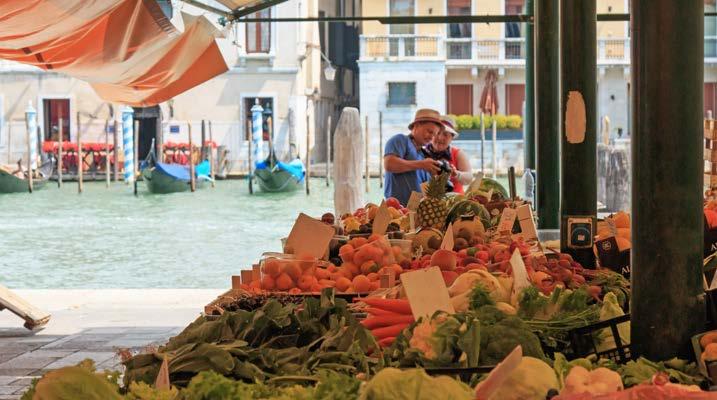
THE RIALTO MARKET
SEE MAP
One of Venice’s most ancient markets, located near the Rialto Bridge on the San Polo side, and a one-of-a-kind place crowded with Venetians, shopkeepers and tourists eager to shop.
ITINERARIES
© DIDIER DESCOUENS

MUSEO DI STORIA NATURALE
SEE MAP
Housed in the beautiful Fondaco dei Turchi, a 13-century Venetian-Byzantyne building, it hosts a magnificent collection of more than two million pieces.

PALAZZO MOCENIGO
SEE MAP
Housing the vast collections of ancient fabrics and clothes belonging to the Venice Civic Museums, since 2013 it boasts a new section dedicated to the history of perfume and essences.
ITINERARIES
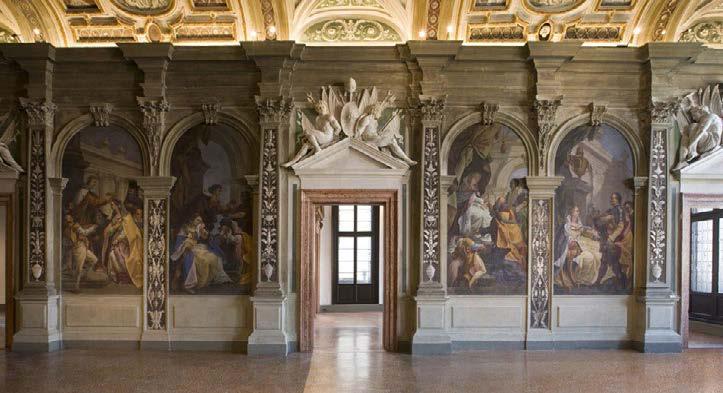
FONDAZIONE PRADA
SEE MAP
Dating back to 1724, this historic palazzo was built on the ruins of a Gothic building. Since 2011, it was re-opened by Fondazione Prada which hosts temporary exhibitions at the venue.

PALAZZO GRASSI
SEE MAP
Renovated by Japanese architect Tadao Ando with Punta della Dogana, it presents personnal and collective exhibitions sharing with the public the extraordinary Pinault Collection.
ITINERARIES
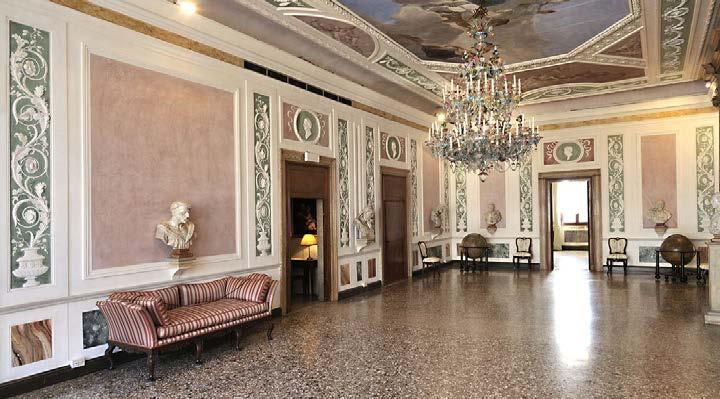
FONDAZIONE QUERINI STAMPALIA
SEE MAP
The minimalist design and water features of the building’s beautiful garden strongly evince the gardens of classical China and Japan.

DOMUS GRIMANI
SEE MAP
In the Castello sestiere, you can visit a truly unique ‘palazzo’ whose interior is reminiscent of the splendours of ancient Rome.
ITINERARIES
© DIDIER DESCOUENS

CASINO DI VENEZIA
SEE MAP
The world’s oldest gaming house (1638), Ca’ Vendramin Calergi is a perfect example of renaissance style and one of the most elegant buildings overlooking the Grand Canal.
© GIORGIO ZUCCHIATTI

BIENNALE GIARDINI
SEE MAP
The official exhibition site of the Biennale together with the Arsenale. Here each country participating at the exposition has its own pavilion designed by a renowned architect.
ITINERARIES
OUT OF TOWN
Veneto is one of the most visited regions in Europe and offers several attractive destinations for a fun, relaxing out-of-town experience. The cities are well connected by train but as an alternative you can either hire a car or a car with a driver.
Padua, Scrovegni Chapel
© EQROY/SHUTTERSTOCK.COM
HALF AN HOUR BY TRAIN FROM VENICE
Treviso: the city is a small gem, which can be visited entirely on foot. Lying at the heart of the city, Piazza dei Signori is the ideal spot to stop and enjoy either a local Proseccobased aperitivo, or a light lunch. The area’s neighbouring streets are packed with elegant shops, cut across by pretty canals offering lots of fabulous photo opportunities.
Padua: home to one of the oldest universities in the world, Padua is a city deserving an entire day’s sightseeing. Among the list of things to do, top sights include the Scrovegni Chapel, Giotto’s masterpiece, but also the famous Church of Sant’Antonio, a pilgrimage site and the burial place of St Anthony of Padua (1193–1231). The city is also home to the oldest botanical garden in the world, planted in 1545 by Padua’s University medical faculty to study the medicinal properties of rare plants.
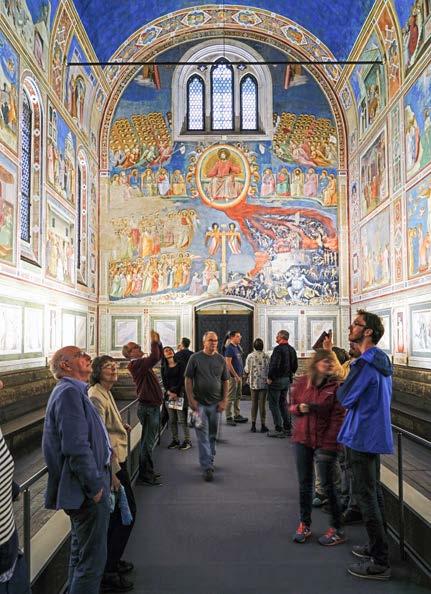
ITINERARIES
Verona and the Adige river
ONE HOUR BY TRAIN FROM VENICE
Vicenza: its main square houses the famous basilica designed by Andrea Palladio, the most important architect of the High Renaissance. The entire life of the city revolves around the Basilica. Palladio also designed the city’s renowned Teatro Olimpico. This Renaissance marvel is well worth a visit or, failing that, a ticket to one of the many live shows performed here.
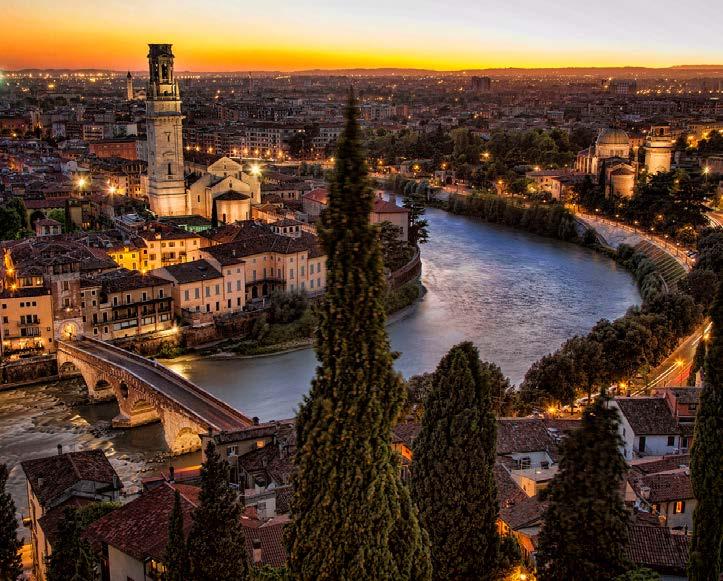
Verona: founded by the Romans in the 1st century AD, the city of Verona is dotted with pretty palazzi, elegant squares and medieval gems. Best-known as home to star-crossed lovers Romeo and Juliet, its major attractions include the Arena, an architectural remnant of the Roman era, and a venue for the city’s annual summer opera festival, the beautiful Castelvecchio Museum and piazza delle Erbe. There are so many churches to see that you’ll be spoilt for choice. No visit would be complete without stopping to see San Zeno, a masterpiece of Italian Romanesque style.
ITINERARIES
Bassano del Grappa: this picturesque town lying at the foot of the mountains is renowned for its namesake spirit, grappa. Its Palladian covered wooden bridge over the River Brenta is a highlight of the small historic centre. Also known at the Ponte Vecchio or the Ponte Alpini, it serves as a reminder of the events that took place during World War I. While in the area, make sure to book a guided tour of one of the distilleries that produce grappa, Italy’s ‘acquavite’ of choice. One of the most famous is Poli. Located in via Gamba 6, this renowned distillery also boasts a must-visit Grappa Museum. At the end of the tour, guests will be treated to a tasting session, accompanied by sweet or savoury snacks. Opened in December 2010, and located at number 8 Salita Ferracina, Palazzo delle Misture is the ideal spot for a pre or post-dinner drink. In addition to an excellent selection of local wines, the venue also features an entire room dedicated to absinth, where you can taste historical brands dating from the late 1800s to the early 1900s.
Bassano del Grappa

© JEANETTE TEARE/SHUTTERSTOCK.COM
ITINERARIES
Trieste, Castle of Miramare

TWO HOURS BY TRAIN FROM VENICE
Trieste: the port and its architecture, reminiscent of central European cities, blend to create an elegant, captivating backdrop. When visiting Trieste you can remain in the centre and stroll through its picturesque alleys, or head to Miramare, the beautiful castle built in the late 1850s by Archiduke Maximilian, brother of Austrian Emperor Franz Joseph. Sitting on a rocky outcrop overlooking the sea, both the castle – whose interior décor has remained intact – and the park are well worth a visit. A ride on the Opicina tram which connects the centre of Trieste with the village of Villa Opicina in the hills above is definitely unmissable. Inaugurated in 1902, the 'tram de Opicina' climbs up five kilometers, including 800 meters on a 26% incline, across splendid landscapes and with wonderful views of the gulf. Trieste is the Mediterranean's main coffee port, and it's also a hub for the coffee industry. In fact, the city is home to Illy, one of the world’s best-known coffee brands. Countless locales bear witness to the city’s history, and, if you head to Piazza Unità d’Italia you can choose your favourite.
MAPS & INFO ESSENTIALS
Venice, the floating city

Some information and invaluable tips to experience the best that this magical city on water has to offer.
In Venice, canals are the only available communication route, bearing in mind that part of the city extends over a handful of beautiful islands that are scattered across the Lagoon. For this reason, the lagoon city can only be crossed on foot or by boat. Calli, campielli and salizade are Venetian words used to identify streets, squares and alleys while sestieri is the local word indicating the six districts the city is divided into:
San Marco, Dorsoduro, Cannaregio,
Santa Croce, San Polo and Castello. This division dates back to the 12th century and also includes areas such as La Giudecca and the Islands of San Giorgio Maggiore and San Michele.
ESSENTIALS
Emergency
POLICE T: 113 AMBULANCE T: 118 FIRE BRIGADE T: 115 TRAFFIC POLICE T: 041 2747070 LOST AND FOUND ON VAPORETTI T: 041 2722179 24-HOUR PHARMACY: check the display at all pharmacies.
Airports
INTERNATIONAL MARCO POLO DI TESSERA AIRPORT (VCE)
- Venice’s Marco Polo Airport offers easy access to numerous destinations located in the Veneto region and in Northern Italy, the
Canova di Treviso Airport (in Sant’Angelo) and main railway routes.
The Marco Polo Airport is situated at a distance of 13 km from Venice (www.veniceairport.it).
Trasportation from the Marco Polo Airport to the historic centre of Venice (and vice-versa):
• Taxis (15 min. to Piazzale Roma, approximately €40); • water taxis (fast, private motorboats, approximately €80 ). This service is operative 24/24h (Consorzio Motoscafi Venezia www.motoscafivenezia.it. T: 041 5222303). • ATVO shuttle bus (20 min. to Piazzale Roma, €3, luggage included); • ACTV bus no. 5 (30 min. to Piazzale Roma with intermediate stops, €1, luggage excluded); • Alilaguna motorboats (a private service that uses ACTV’s network of docking stations with intermediate stops at strategic points throughout the city. Fares range from 8 to 27 euros). www.alilaguna.it. T: 041 2401701.








